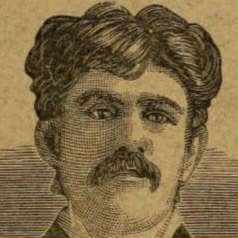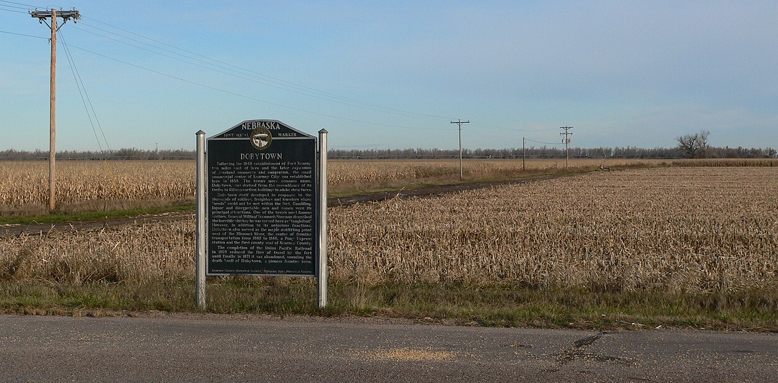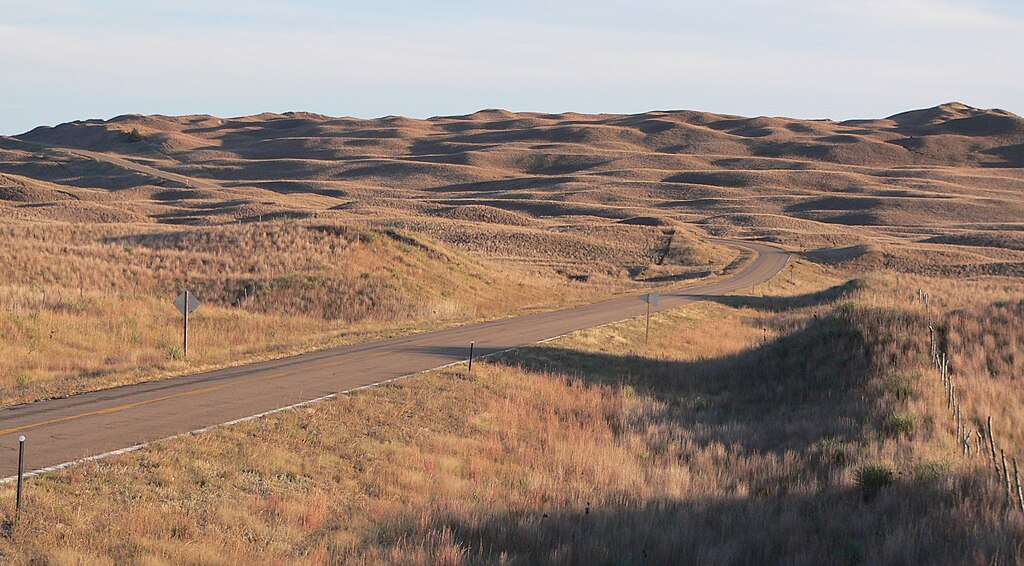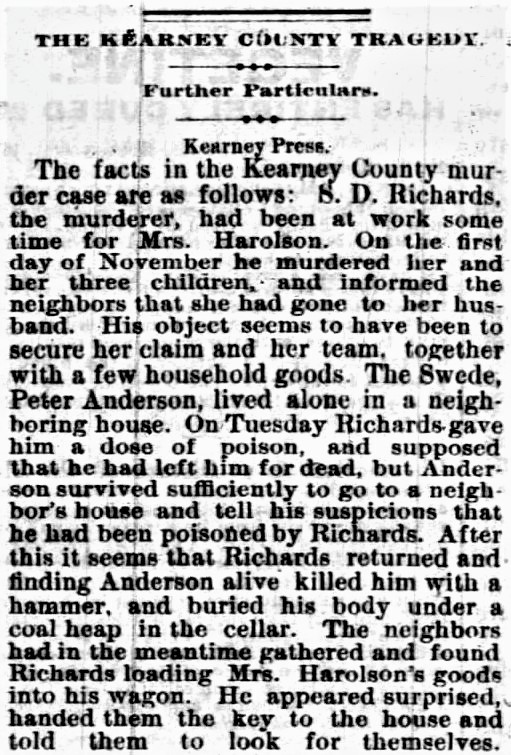
1856 - 1879
Stephen D. Richards
Summary
Name:
Nickname:
Kearney County Murderer / The Nebraska Fiend / The Ohio MonsterYears Active:
1876 - 1878Birth:
March 18, 1856Status:
ExecutedClass:
Serial KillerVictims:
6+Method:
Shooting / Stabbing / PoisoningDeath:
April 26, 1879Nationality:
USA
1856 - 1879
Stephen D. Richards
Summary: Serial Killer
Name:
Stephen D. RichardsNickname:
Kearney County Murderer / The Nebraska Fiend / The Ohio MonsterStatus:
ExecutedVictims:
6+Method:
Shooting / Stabbing / PoisoningNationality:
USABirth:
March 18, 1856Death:
April 26, 1879Years Active:
1876 - 1878bio
In the mid-1800s, Nebraska saw a lot of changes. The Kansas-Nebraska Act of 1854 created the Nebraska and Kansas territories to help build the Transcontinental Railroad. Nebraska became a state in 1867, two years after the Civil War ended. Once Nebraska became a state, many people moved there. The first governor, David Butler, stirred up some political issues, leading to calls for a state constitution in 1871. During these years, from 1853 to 1871, Nebraska's criminal law system was still developing. The state's criminal code was written in 1871. Before Stephen Richards was executed, Nebraska had only one recorded execution in 1863, four years before it became a state.
Stephen D. Richards was born on March 18, 1856, in Wheeling, Virginia. He had five sisters and a brother. When he was six, his family moved to Ohio, first to Monroe County, then to Noble County. They finally settled in the Quaker village of Mount Pleasant when he was eleven. His mother was a devout Methodist, and his father was a farmer who did not practice any religion. Richards went to school in Mount Pleasant and attended Sunday school and church regularly at his mother's insistence.
Richards lived with his parents until he was twenty, working for local farmers. His mother died on September 16, 1871, when he was fifteen. At twenty, he got engaged to Anna Millhorne, who he wrote to during his travels until his final arrest. He also started associating with men of "questionable occupation" and began passing counterfeit bills from a man in New York City. In February 1876, Richards left Mount Pleasant for better job opportunities out west.
Richards lived in Iowa for a short time, working as a farmhand in Burlington and Morning Sun. He was later hired as an attendant at the Iowa Lunatic Asylum in Mount Pleasant, Iowa, where he buried deceased patients. His time at the asylum greatly affected his view of humanity. He claimed he didn’t see any abuse but said he started seeing people as "nothing more than meat."
Richards left the asylum in October 1876 and began drifting around the Midwest. He found occasional work and sometimes hung out with train robbers. He stayed in Kansas City briefly, then moved to Nebraska, passing through Hastings and arriving in Kearney. He stayed in Kearney for two to three weeks before moving to Cheyenne County. Richards claimed he got into several gunfights during this time, shooting people but not knowing their conditions afterward. He used the name William Hudson during this period but discarded it when he reached Kansas City.
murder story
In a confession written after his final arrest, Richards admitted to killing four men during his travels around Nebraska and Iowa between 1876 and 1877. He said he committed his first murder in late 1876, two weeks after arriving in Kearney.
Richards met a man while traveling on horseback in Nebraska. They camped for the night near Dobytown and played cards. Richards won most of the stranger's money. The next morning, the man demanded his money back. When Richards refused, the man became aggressive, so Richards shot him above the left eye, killing him instantly. He disposed of the body in the Platte River.
A few days later, Richards met another man 15 miles from Walker's Ranch. This man had seen Richards with the first victim and asked about him. Richards realized they were friends. Fearing the man knew too much, Richards shot him in the back of the head and sold his horse in a nearby town. Richards then visited the home of Jasper Harlson, a train robber, whose wife noticed blood on Richards' shirt. He joked that it must have come from the men he had killed.
Richards traveled to Cedar Rapids, Iowa, where he bought a horse and buggy with counterfeit money. When the seller discovered the money was fake and demanded real money or the return of his goods, Richards shot and buried him.
In March 1877, Richards and a young man named Gemge left Grand Island, Nebraska, for Kearney. They camped near the Platte River. After an argument in the middle of the night, Richards shot Gemge in the head. Richards then arrived in Kearney, using the name F.A. Hoge at a hotel. He met old acquaintances, including George "Dutch Henry" Johnson. On March 21, Richards and another man, Burns, were arrested on suspicion of murder. Richards was acquitted, but Burns remained in custody due to a testimony. Burns was later acquitted as well.


In June 1878, Richards was arrested for larceny in Kearney but claimed the charge was false. While in jail, he reunited with Mary Harlson. She agreed to sell him her property for $600. After his release, Richards traveled around Nebraska before arriving at the Harlsons' homestead in October 1878. He stayed there and claimed to have married Mary Harlson to obtain her land. In November, Richards killed Mary and her three children with an ax while they were sleeping. He buried their bodies nearby.
On December 9, 1878, Richards helped his neighbor, Peter Anderson, with work. Anderson became ill after a meal Richards prepared, suspecting poisoning. Anderson confronted Richards, leading to a fight where Richards killed Anderson with a hammer. Richards denied poisoning him, claiming self-defense. Anderson's body was found buried in his cellar.
Richards fled Kearney, expecting the bodies to be discovered. He traveled east, eventually reaching his hometown of Mount Pleasant. Nebraska's governor issued an arrest warrant for Richards. On December 20th, Richards was arrested in Mount Pleasant by a constable named McGrew, who recognized him from a wanted poster.

Richards was jailed in Ohio and confessed to nine murders over three years. Sheriffs from Nebraska returned him to the state. Fearing a lynching, authorities moved Richards to a jail in Omaha. His trial began on January 16, 1879. Richards was found guilty of the murders of the Harlson family and Anderson and sentenced to death by hanging.
Richards' execution was on April 26, 1879. He was calm and claimed his innocence. After his execution, his body was stolen but later returned. His bones were scattered in Kearney, and his skull was displayed in a newspaper office. Its current location is unknown.